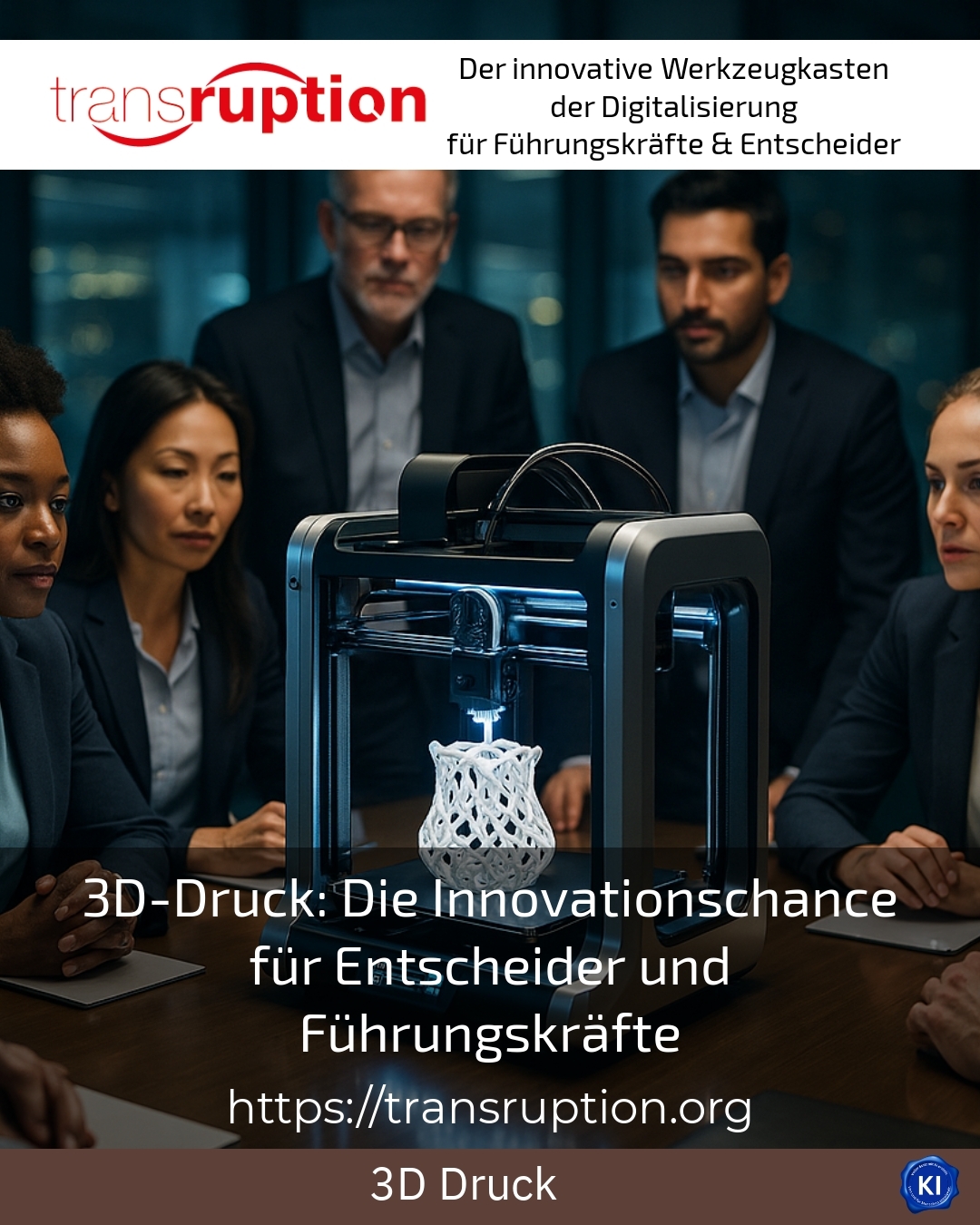3D printing opens up a remarkable opportunity for decision-makers and managers to actively shape innovation processes and take corporate strategies to a new level. This technology supports the rapid implementation of product ideas and enables new business models through individualised production. Especially in dynamic markets, flexibility and efficiency are becoming decisive competitive advantages that 3D printing can significantly promote.
Why 3D printing is a strategic advantage today
Numerous industries are demonstrating how 3D printing can significantly accelerate product development. For example, additive manufacturing in mechanical engineering enables the rapid production of prototypes that are traditionally time-consuming and expensive using conventional methods[1]. This enables SMEs to react more quickly to customer requirements and adapt their product portfolio with agility.
In the automotive industry, manufacturers use 3D printing to produce spare parts just-in-time or to completely redesign complex components. This reduces storage costs and minimises production line downtime[2][3]. Toolmakers also benefit by producing precisely fitting tools that would otherwise be difficult or impossible to realise using conventional methods[6].
In the healthcare sector, 3D printing technologies enable the development of customised prostheses or implants. These individualised solutions noticeably improve patient care and at the same time open up new business areas for innovative companies[6].
3D printing as a source of inspiration for managers
Decision-makers are often faced with the challenge of efficiently supporting innovation projects. This is where 3D printing provides support with concrete impulses, some of which can be implemented immediately. Iterative development cycles produce usable results more quickly, which can be tested and improved in practice. This approach minimises risks and increases planning reliability for new products or processes.
In addition, customised product components create new customer loyalty. By expanding personalised services, it is possible to respond more strongly to target group requirements and differentiate oneself from the competition. For the management level, this means a strategic lever for strengthening the market position.
Companies often report that challenges relating to material selection, design optimisation and process integration can be overcome more easily with supportive coaching in 3D printing projects. This support helps to develop internal expertise and anchor the technology in the company in the long term.
BEST PRACTICE at the customer (name hidden due to NDA contract) Thanks to professional support in the field of 3D printing, a medium-sized manufacturing company was able to quickly switch from prototype development to near-series spare parts production. This ensured the ability to deliver at short notice and significantly increased customer satisfaction, especially in times of pandemic-related supply bottlenecks.
Practical examples from various industries
In mechanical engineering, complex housings with tight tolerances can be printed precisely and cost-effectively[2]. This results in robust components that can withstand high loads during operation and increase efficiency at the same time.
In the aerospace sector, lightweight construction is now a reality thanks to 3D printing. Fuel tanks and engine components are optimised in terms of weight and stability, which reduces operating costs and increases performance at the same time[2][5].
3D printing is also used in architecture to create innovative models and entire building components. This leads to faster planning, cost savings and the realisation of complex designs that are often impossible using conventional methods[6].
How managers can utilise the innovative power of 3D printing
Successful decision-makers invest in team training to build up expertise in 3D printing. This allows internal processes to be organised more sustainably and innovations to be better managed. It is worth initiating pilot projects to evaluate the added value of the technology in your own company.
Networking with specialised partners and service providers should also be sought. Transruption coaching forms a valuable bridge here to accompany challenges in the integration of 3D printing and lead projects to success.
An integrative approach that takes technology, organisation and market requirements into account offers managers a wide range of opportunities to systematically strengthen their own innovative power.
BEST PRACTICE at the customer (name hidden due to NDA contract) A leading automotive supplier established a 3D printing-based manufacturing process for small series and spare parts within a year. The support provided by experienced coaches helped to overcome technological hurdles and significantly shorten the time-to-market.
BEST PRACTICE at the customer (name hidden due to NDA contract) An innovative medical technology start-up used 3D printing to react quickly to new regulatory requirements and manufacture customised implant solutions. The accompanying coaching enabled the smooth development of manufacturing expertise and the improvement of product quality.
My analysis
3D printing opens up great potential for decision-makers and managers to drive innovation processes flexibly and efficiently. Thanks to the combination of rapid prototype production, customised product design and cost savings, 3D printing supports companies in successfully asserting themselves in dynamic markets. Structured support during implementation helps to minimise technology risks and sustainably increase innovative strength. It is therefore worth consciously integrating 3D printing as a strategic tool in the company's development.
Further links from the text above:
How companies are harnessing the power of FDM 3D printing
Areas of application for 3D printing | Blog post
25 (unexpected) applications for 3D printing
30 applications with 3D printing - simple examples
Five industries that benefit most from 3D printing
For more information and if you have any questions, please contact Contact us or read more blog posts on the topic TRANSRUPTION here.
















